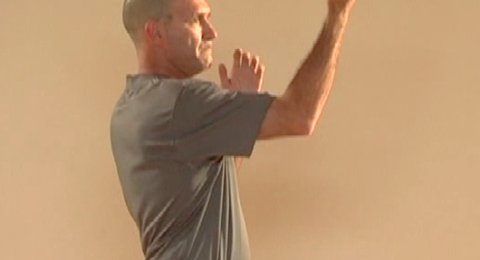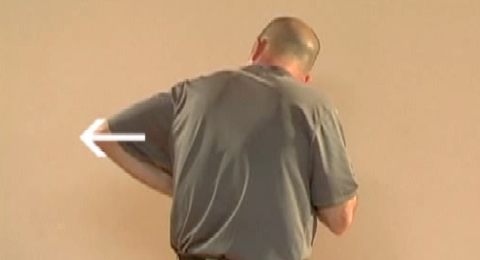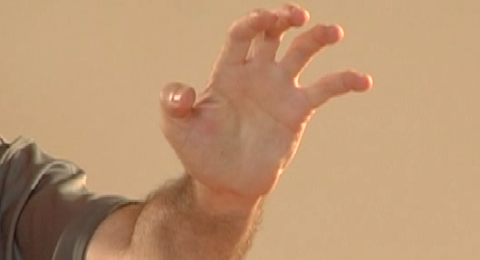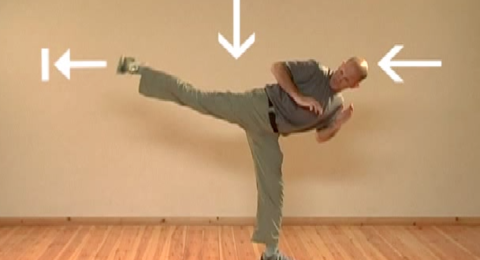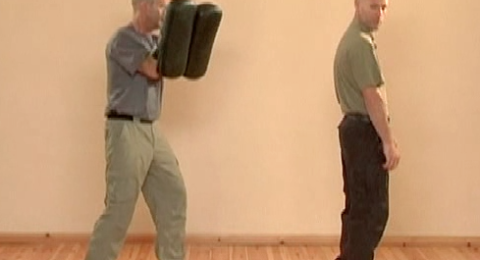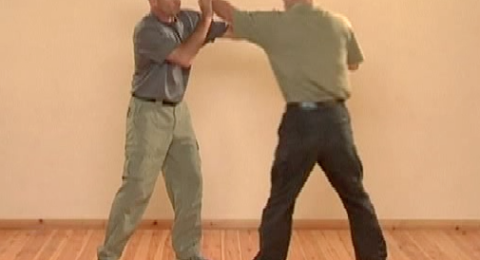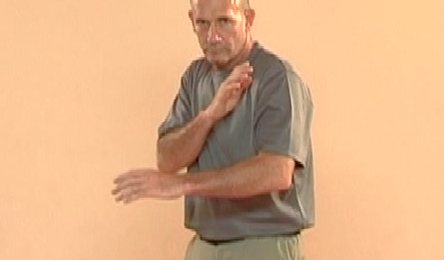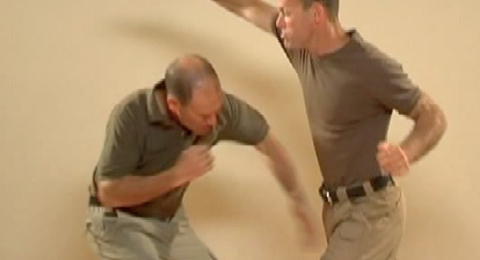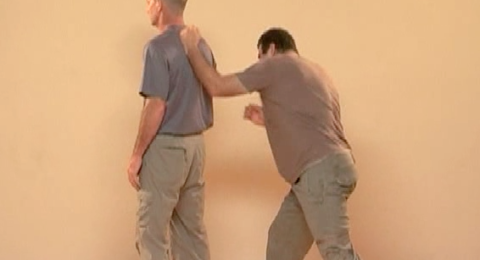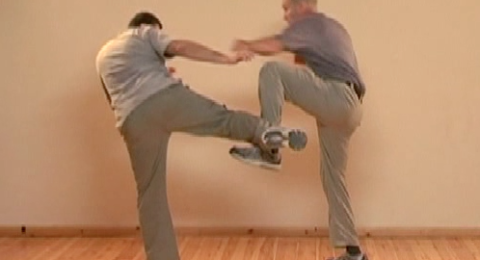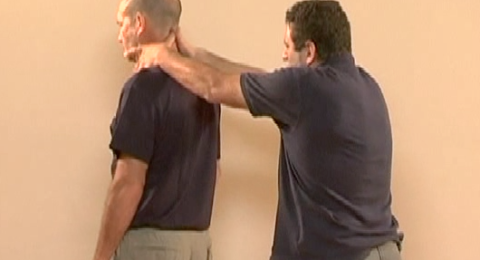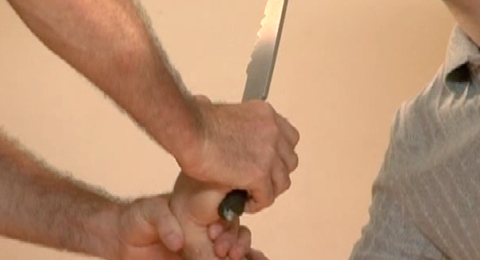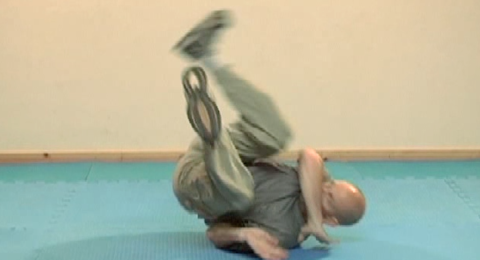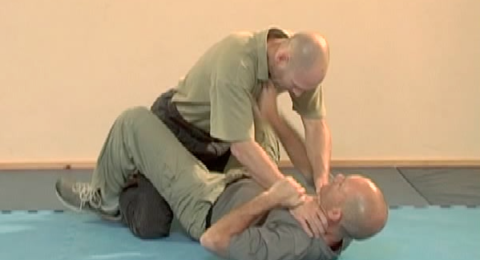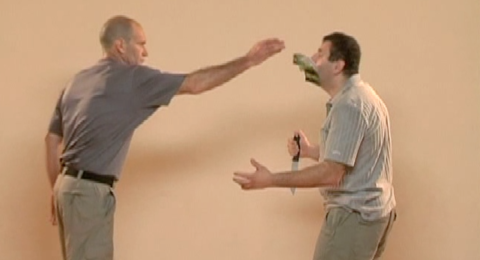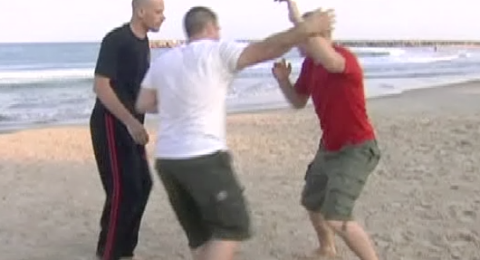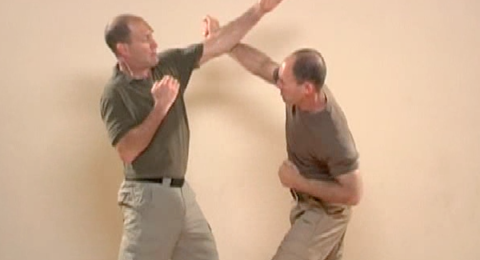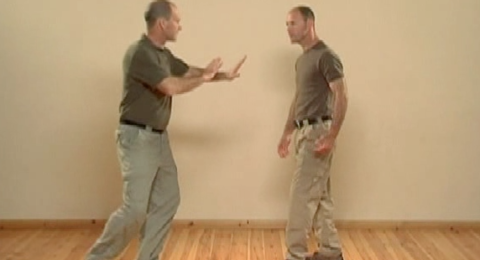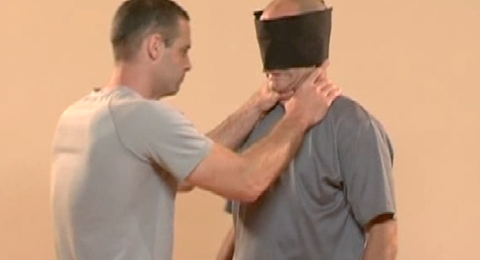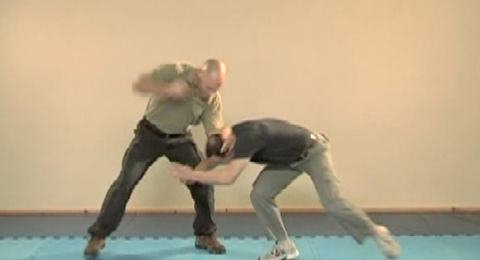Defensive kick forward. This is a straight kick forward, but aim, to stop an opponent, to strike a vulnerable area naturally too. Raise your knee towards your shoulder, and then send the hitting part straight towards a target. You can hit with heel, with whole foot or with the ball of the foot. In order to stop an opponent, one needs to shift the weight forward. This can be definitely also a pushing kick.
Series of attacks, starting with defensive kick backwards. As you bend forward and look backwards, you deliver a straight kick backwards. Is a stomping kick. Lift the heel towards your buttocks and then send it towards a target. The knee and the toes should be pointing downwards. You should be looking by the side of the shoulder or below the body and the arm. As in all the family of the stomping kicks, the heel is the hitting point. Training with a partner on the defensive kick backwards, hitting the pads, the defensive kick backwards is an opening kick to the series of attacks.
Side kick. The side kick can be directed to different heights. You should lift the knee while rotating the joint of the hip, send the heel towards a target. Your head, hip, heel and target should be on the straight line. Send your hip with sort of a torque towards a target. The base foot, base hill should be turned while kicking. You should kick with a flat foot, directing the hill to the target. A comfortable learning process can start kicking the defense kick backwards, then turning a bit, kicking the same kick while the foot is more horizontal, and then turn more to reach the side position to kick the side kick.
Circle or roundhouse knee kick. Striking can be diagonally knee upwards or horizontal depending on the targets and on the needs. Shoot the knee diagonally upwards, and then strike the target accordingly. Bend your knee to a enable a sharp hitting part. Start with the knee kick and add a strong body turn. This torque increases your momentum and destructive power. Pull the target into the knee, this will enable you to strike harder.
Roundhouse kick forward. It’s a circular kick. Start by sending your knee forward, raising the leg, have the chin and the thigh reaching horizontal plane. Strike strongly, hit with the ball of foot and recoil fast. You can start from a passive stance or general outlet stance. Kicking with the back leg is a basic technique. You kick, recoil, and land forward in a side ways position more less. A basic roundhouse, is quite a snap kick. Here can be done diagonally upwards, in different angles till it can reach to horizontal kick and even a kick diagonally downwards. You must pass the target to enable a strong hit. You can kick to different heights. Here’s an example for a comfortable combination. Starting with a roundhouse, continuing with a side kick and more.





